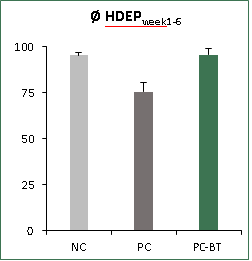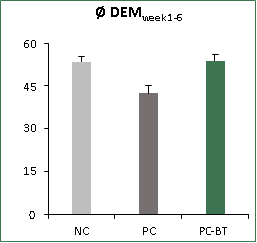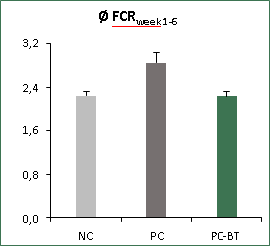Poultry feed accounts for the biggest costs in the production chain with around 70-80%. Contaminants such as mycotoxins generate substantial losses in the quality of the ingredients and of the final feed product. These mycotoxin-associated stress factors are known to negatively affect the welfare, health and productivity of commercial poultry.
Deoxynivalenol (DON) and T-2 toxin (T-2) are members of a large group of fungal metabolites with the same basic chemical structure, called trichothecene mycotoxins produced by various Fusarium spp.
Their mode of action is based on the enzymatic inhibition of protein synthesis. Therefore, these mycotoxins could preferentially affect the rapidly proliferating cells of the immune system. Especially T- 2 is considered the most potent protein synthesis inhibitor. Furthermore, DON and T-2 also alter the synthesis of RNA and DNA. Moreover, a dose-response-related decrease in egg production, egg and shell weight, thinner eggshells and decreased hatchability in laying hens fed a T-2-contaminated diet has been reported. Consequently, efficient counter strategies against the manifestation of the cytotoxic effects of mycotoxins have a growing practical relevance in poultry production.
Feeding trial confirms toxin binder efficiency
A scientific study was conducted at the Instituto Samitec, Brazil to investigate the efficiency of the toxin binder B.I.O.Tox® in preventing the adverse effects of the trichothecenes DON and T-2 in laying hens.
The trial was performed on 144, 21-wk-old ISA Brown laying hens, randomly allocated into 3 feeding groups. The negative control group (NC) did not contain any mycotoxins nor a toxin binder. The diets of the positive control group (PC) and the toxin binder group (PC-BT) were artificially contaminated with DON and T-2, whereby the PC-BT group additionally contained the toxin binder B.I.O.Tox®. Dosages and levels of contamination are described in table 1. Each feeding group had 8 replications, each consisting of 6 animals, resulting in 48 hens per treatment.

During the six weeks of trial duration, all hens were restrictively fed 120 grams of feed daily which is in line with the management guide. Water was offered ad libitum. The animals received an iso-nutritive corn-based diet formulated according to the NRC (National Research Council, 1998) specifications after NIRS evaluation of the raw materials.
The basal diet was analyzed for the following
mycotoxins: Aflatoxins, deoxynivalenol, zearalenone, diacetoxyscirpenol, fumonisins, ochratoxin A and T-2 toxin. No detectable levels of these mycotoxins were found.
The body weights and the laying intensity were statistically equivalent in each treatment at the beginning of the trial.
Mycotoxin challenge reduces performance
In the PC group, the performance parameters were significantly reduced. Namely the mean hen-day egg production of week 1 to week 6 as well as the mean daily egg masses of the described period were decreased by 21% compared to the NC group. On the contrary, in the PC-BT group both production parameters were on the level of the NC group (figure 1+2).

experimental period (Ø HDEPweek 1-6)
Bars represent mean + SD (n = 48). Different letters in each group of bars indicate significant difference (p < 0.0001).
Similarly, the mean feed conversion ratio (FCR) considering the required feed quantity in kilogram per produced egg mass in kilogram clearly differed between the treatments. In the PC group the FCR was significantly increased by 27% compared to the NC group. In the PC-BT group the FCR was on the same level with the NC group (figure 3).

Bars represent mean + SD (n = 48). Different letters in each group of bars indicate significant difference (p < 0.0001).
No significant differences between treatments have been observed concerning feed intake and average egg weights regarding the whole experimental period (Ø 56.5 g/egg). No hen died during the experiment.

Bars represent mean + SD (n = 8). Different letters in each group of bars indicate significant difference (p < 0.0001).
Addition of B.I.O.Tox® mitigates mycotoxin impacts
In the current study, several economically important parameters like the laying rate shown by the hen- day egg production, the daily egg mass and the feed conversion ratio were negatively affected by the presence of dietary DON and T-2 contamination. These adverse effects on performance were completely compensated by the dietary supplementation of 0.1% B.I.O.Tox®. This confirms the previous findings from in vitro studies on the mycotoxin binding efficiency for B.I.O.Tox® being equally effective in the living animal.
These effects make B.I.O.Tox® an efficient tool for controlling mycotoxin risk, preserving biological performance and farm profitability!